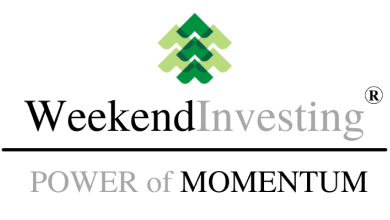Where is the market headed?
Nifty was down for the third straight session. As we approach the end of July, the index has seen virtually no gains this month. After peaking at the end of June, it’s been a steady decline bringing us all the way back to May levels.
Market Overview
Nifty slipped 0.63%

Nifty Next 50
Nifty Junior was also down 0.56%, extending its losing streak to a sixth straight session after five consecutive red candles.

Nifty Mid and Small Cap
Mid-caps also lost ground, down 0.87% for the day, marking three straight sessions of decline. They had rebounded sharply from the recent bottom, so this correction isn’t entirely unexpected.
Small-caps were hit the hardest, falling 1.25%. With red candles in eight of the last sessions, clear signs of fear and weakness are building in the small-cap space.


Bank Nifty
Nifty Bank continues to hover around the same levels seen since May, showing little overall movement. However, Kotak Bank dragged the index lower today with a sharp decline post-results, leading to a 0.79% drop in Nifty Bank.

GOLD
Gold continues to hover around its average, bobbing just above it since mid-April. It currently stands at ₹9,857 per gram.

Advance Decline Ratio
The advance-decline ratio was very weak, with declines rising steadily through the day and no recovery by the close, a mildly worrying sign. Only 126 stocks advanced, while 375 declined.

Heat Maps
The Nifty heat map was dominated by red, with Kotak Bank standing out, down 7.5%. Notably, Kotak Bank hasn’t delivered any returns, dividends included for the last four and a half years. That’s a concerning signal for a large private bank. It reflects a broader issue: if growth slows to single digits or low double digits, but stocks are priced for 20% growth, disappointment is inevitable.
That said, domestic fund flows remain strong. It’s likely just a matter of time before the market finds some intermediate bottom and resumes its upward trend. Indian markets have become accustomed to premium valuations, making price comparisons with other countries—like Korea, Hong Kong, or Indonesia—largely irrelevant. In India, it’s all about flows. If domestic flows slow down, that’s when trouble begins.
Today, ICICI Bank managed to limit some of the damage. On the Pharma side, Cipla, Sun Pharma, Dr. Reddy’s, and several mid-cap pharma stocks performed well. On the flip side, IT stocks were under pressure. TCS spooked the sector by announcing plans to lay off 2% of its workforce—about 12,000 employees—sparking concerns across the industry.
Real Estate stocks also took a heavy hit. DLF dropped 4.73%, likely due to a large fund offloading its holdings. The selling was concentrated, with Lodha falling 5.96%. PSU financing stocks like PFC and REC, along with PSU banks, were also down.
A few pockets of green were seen in Varun Beverages, Dabur, Motherson, and Adani Green. However, names like Naukri, Hindustan Aeronautics, DMart, IndiGo, and Jindal Steel were in the red—some due to profit booking, others continuing their downward trend as part of broader sectoral weakness.


Sectoral Overview
Sectoral trends showed sharp declines across the board. Real Estate led the fall with a steep 4% drop in a single day—a significant move by any standard. Media was down 2.7%, Defense 2%, Capital Markets 1.7%, Private Banks 1.6%, and PSU Banks 1.2%. Losses were visible across sectors.
Only Pharma and FMCG—the classic defensives—offered some relief, managing to limit the damage. The strong uptrend seen over the last month and a half now appears broken. The focus shifts to where the market will consolidate and form a fresh base before making its next move.

Sector of the Day
Nifty Realty Index
The Real Estate index has dropped sharply, falling from nearly 1,050 to 911—a brutal correction. Major names like Lodha, Godrej, DLF, Oberoi, and Brigade have all taken heavy hits, dragging the entire real estate space down.
(This ties into a recent video we did: The Biggest Enemy of Your Portfolio)


Story of the Day: 5 Unknown Investment Lessons From Warren Buffett
Warren Buffett, often regarded as one of the greatest investors of the last two centuries, has delivered countless insights over the years. Yet beyond the well-worn headlines and popular soundbites, there are lesser-known quotes that contain powerful lessons for long-term wealth creation. In a market frequently dominated by noise, narratives, and the pursuit of quick wins, these principles are increasingly relevant. While many investors chase the next big thing or look for a ‘secret formula’ to outperform the market, true success is often built on discipline, focus, and the willingness to think differently. The reality is that a small percentage of investors consistently outperform, while the majority either underperform or simply waste time. Here are five underappreciated Buffett quotes that offer meaningful takeaways.
The first quote: “The most important quality for an investor is temperament, not intellect.” This idea is echoed by many legendary investors. Success in markets isn’t determined by IQ but by how well one manages emotions. A sound temperament allows an investor to remain detached from hype and panic, detached enough to observe their own behaviour and correct mistakes.
Rather than participating in every market wave, it’s about maintaining a calm, rational distance. The ability to stay steady during turbulent times and avoid the herd mentality is crucial. In euphoric phases, like past rallies in small-cap indices, crowds often pile in at the top, fueled by dreams of overnight wealth (see the image below).

At market bottoms, fear dominates, and investors exit just before a rebound (see the image below).

For example, during the COVID-19 crash, many investors sold at Nifty 7,000, fearing further collapse, only to miss a massive rally that followed. Emotional decision-making, especially when influenced by others, often leads to poor outcomes. Investment is a solo journey; bouncing ideas off too many people can create confusion. Every stock is a buy in one strategy and a sell in another—clarity comes from sticking to your own.
The second quote: “Only when the tide goes out do you discover who’s been swimming naked.” While this may be more widely known, its implications during bull markets are often overlooked. In booming markets, investors tend to become overconfident. They liquidate other asset classes and go all-in on risky bets like microcaps or SME stocks. This leads to a lack of diversification and concentrated exposure that can backfire when markets reverse. Some investors even bet their entire portfolio on a handful of speculative names. But just because concentrated investing has worked for a few doesn’t mean it’s suited to everyone, especially those without the temperament or tactical skill to manage such exposure. When the market corrects, poor asset allocation is painfully exposed. Diversification across equity, debt, gold, and real estate—and within equities across market caps—helps cushion portfolios. Betting on timing the market better than institutional investors and experienced traders is a dangerous illusion. While diversification may sometimes limit extreme upside, it prevents catastrophic losses that derail wealth creation.
The third quote: “The investor of today does not profit from yesterday’s growth.” Many investors remain anchored to past winners. They invest in companies that have delivered great returns historically, expecting the trend to continue indefinitely. But past performance doesn’t guarantee future results. A system that avoids this trap scans for current price strength, not historical glory.
Discretionary investors, however, often fall in love with stocks that performed well in prior decades, such as HDFC Bank. Despite its legendary long-term CAGR, the stock has underperformed in recent years, missing out on mid- and small-cap rallies (see the image below).

Investors who entered based on its historic track record saw opportunity cost stack up. Similarly, PSU banks were neglected for years before delivering massive returns in the recent cycle. Staying loyal to legacy winners often means missing the dynamic changes in sectors, geographies, and themes. Adaptive investing—based on what the market is currently favoring—is critical.
The fourth quote: “Predicting rain doesn’t count. Building the ark does.” Forecasting markets has become an obsession, with endless predictions on television, in newspapers, and online. These forecasts rarely hold true. Instead of trying to predict the market’s every move, investors are better served by building robust systems that can weather volatility. This includes developing a personal process, a strong asset allocation framework, and a resilient mental state. It’s not about whether the market will rain tomorrow—it’s about carrying an umbrella regardless. A solid system reduces the need for constant predictions and minimizes emotional interference.
The fifth and final quote: “The trick is, when there is nothing to do, do nothing.” In periods of stagnation or market fatigue, the urge to act can be overwhelming. Recent examples include anxiety over India’s growth narrative, concerns over IT sector layoffs, and global uncertainty. Many investors feel compelled to exit or overhaul their strategies. But this constant tinkering often causes more harm than good. Not every moment demands action. Patience and discipline during quiet or corrective phases are what prepare investors to thrive when the next opportunity arises. Every week, month, or year will not be profitable—but sticking to a well-chosen strategy over time improves the odds. Inaction, when guided by a system, can be the most effective action. Emotional decisions, made in haste, typically lead to underperformance.
A stable investing framework that automates entries and exits offers not only better results but also peace of mind. Investors who transition from discretionary approaches to systematic ones often find that their stress levels drop, and their sleep improves—even with larger sums at stake. The real battle in markets is not with others, but with one’s own impulses. Avoiding unnecessary action, focusing on process over prediction, and letting go of past anchors are habits that separate successful investors from the rest.







